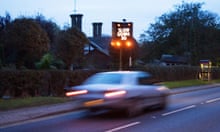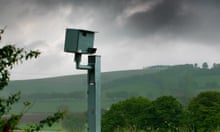Sensational news. The government is starting to remove white lines from the middle of roads in parts of the UK. It is doing so to reduce accidents and save lives. The idea is apparently revolutionary.
Research has shown that removing white lines induces uncertainty and thus cuts vehicle speeds by 13%. This has been the case on London’s A22, A23 and A100. Pilot schemes are also in place in Wiltshire, Derby, and round the Queen’s house at Sandringham (don’t ask).
Behind this demarking lies the concept of “shared space” and “naked streets”, developed in the 1990s by the late Dutch engineer, Hans Monderman. He held that traffic was safest when road users were “self-policing” and streets were cleared of controlling clutter. His innovations, now adopted in some 400 towns across Europe, have led to dramatic falls in accidents. Yet for some reason Monderman’s ideas remain starkly uninfluential in the world of “big” health and safety, especially in Britain.
Monderman’s principle is that freedom to assess risk for ourselves is what makes us safer. Rules, controls, signs, traffic lights all reduce our awareness of our surroundings and thus our sense of danger. On roads, he said: “When you don’t exactly know who has right of way, you tend to seek eye contact with other road users. You automatically reduce your speed … and take greater care.”
Monderman’s British apostle, John Adams of University College London, once suggested I drove on to a motorway, got up to the speed limit and removed my seatbelt. What did I do next? He was right. I slammed on the brake. I swiftly adjusted my threshold of acceptable risk. Adams has figures to prove that countries – indeed US states – that do not require motorbike helmets have fewer biking accidents than those that do.
The most dangerous place on a road is at traffic lights. Almost half the accidents in most cities occur at lights. This is due not just to war between “amber gamblers” and reckless cyclists. A crossing is where everyone should be watching everyone else, but everyone is watching the lights. They are awaiting orders. When given them, they assume all is safe and crash on.
Nor is it just accidents that are at issue. Last October the Yorkshire town of Beverley suffered a failure of 42 traffic lights and was amazed when traffic moved more smoothly. In Somerset the traffic campaigner Martin Cassini secured a 50% improvement in traffic flow by persuading Portishead to turn off its traffic lights. They stayed off.
The same goes for those other boys’ toys for traffic engineers – the one-way street and the cycle lane. A recent US study found that making streets two-way halved accidents, shortened journeys and reduced pollution. As for cycle lanes, a 2014 study suggested that painting roads made cycling more dangerous.
The Highway Code demands drivers give cyclists “as much room as you would when overtaking a car” but a cycle lane is far narrower. While drivers must manoeuvre past random cyclists, cameras on a Lancashire road showed that drivers gave cyclists in marked lanes 18cm (7in) less distance at far higher speeds than those on an ordinary road. Painted lanes made everyone feel super safe.
Shared space is not for every road. It requires attention to surfaces and speed breaks, and routes for the disabled. But it clearly cuts accidents. London’s best-known “naked street”, Kensington’s Exhibition Road, has seen a fall in driving speeds and fewer crashes. Likewise such streets in Camden, Ashford and Poynton in Cheshire, along with the celebrated continental examples of Drachten in Holland and Bohmte in Germany, where the high streets have become virtually accident-free zones.
Yet for all these “experiments” and “pilots” over more than a decade, why is the concept of shared space not more popular?
The answer is that the white line down the middle of the road is a metaphor of the age. It is the guiding hand of a benign government. Its abolition hints at a loss of control, a lurch from authority towards personal responsibility, even towards anarchy. Mankind cannot tolerate too much naked tarmac. No sensible person could want more confusion and uncertainty in life. We need the firm paintbrush of a caring minister.
Monderman, who died (in his bed) in 2008, saw traffic management as a symptom of a deeper ailment. “We’re losing our capacity for socially responsible behaviour. The greater the number of prescriptions, the more people’s sense of personal responsibility dwindles,” he said. It was this loss of responsibility that yielded the paradox that ever more intrusive safety and security actually make us less safe. Traffic is the most visible manifestation of that.
A giveaway is the absence of fixed barriers dividing many road carriageways – other than on motorways. We allow drivers to race towards each other at closing speeds of 100mph, without so much as a row of cones between them, let alone barriers to protect pedestrians. The reason is that we trust drivers not to kill themselves. We leave them to judge their own risk. But if not barriers, why white lines and traffic lights?
A public road is like a restaurant. It is a place where we daily put our lives at the mercy of strangers. We show a reckless faith in a chef’s skill and care. But at least a chef who poisons us is in trouble. Traffic engineers, who maim and kill us with their regulations, lights and paint pots, merely go on dreaming up ever more of them. They pretend they are making our lives safer when they are doing the exact opposite. And we let them.





